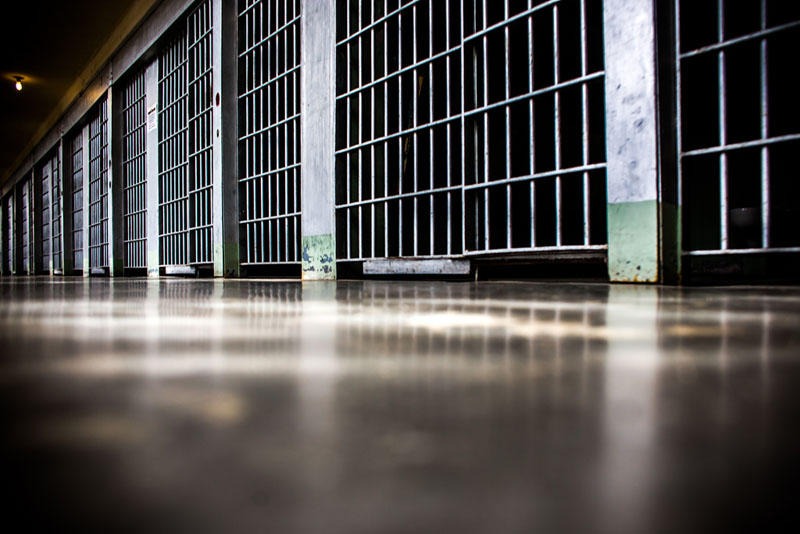
Suicide Warning Signs Missed At Washington Prisons, Investigation Finds
READ ON
NOTE. This story discusses the topic of suicide. If you or someone you know is contemplating suicide, call for help now. The National Suicide Prevention Hotline is a free service answered by trained staff. The number is: 1-800-273-8255. Or chat live online here.
For the second time in less than a year, Washington’s Corrections Ombuds (OCO) is warning that the state’s prison system needs to do more to prevent inmate suicides.
In a 15-page investigation released Monday, the OCO found that two inmates died by suicide in 2020 after prison staff failed to recognize signs of mental distress and didn’t follow suicide prevention policies.
“Suicides are preventable. There should be zero, that should be the goal” said Assistant Ombuds Dr. Patricia David, the investigation’s author and the OCO’s Director of Patient Safety and Performance Review.
The findings follow a similar investigation last year prompted by the deaths of five inmates who took their own lives in 2019 – a spike that the OCO deemed a “dramatic increase from prior years.”
While the two suicides in 2020 represented a return to a more typical number, the OCO said it decided to investigate nonetheless to see if recurring issues contributed to the deaths.
Two inmates, two suicides
In the first case, a 25-year-old white prisoner died after being found unresponsive in a cell at the Monroe Correctional Complex with two strips of towel wrapped around their neck.
The investigation found that the inmate had a history of suicidality, inpatient hospitalizations and drug abuse. Upon arrival at prison in July 2019, the inmate was taking psychotropic medications.
In the months ahead, the prisoner exhibited “bizarre behavior,” according to prison staff, and was placed on suicide watch multiple times. In the later part of 2019, the inmate began getting into trouble for inappropriate, sexualized behavior. The person also sent cryptic grievance notes that referenced dying in prison.
But instead of providing mental health care, prison staff sent the notes back to the inmate to be rewritten and issued infractions for the behavior. (The OCO said the grievance system has since been improved.)
Eventually, the prisoner stopped cleaning their cell and started smearing, and even eating, their own feces. In January 2020, the inmate attempted suicide using linens and was once again put on suicide watch. Three days after being taken off suicide watch, the prisoner died by suicide.
The Department of Correction’s (DOC) own investigation found key records related to the inmate’s suicide risk were missing from their medical chart. That investigation also concluded prison staff failed to follow all policies.
The OCO’s independent investigation faulted prison custody staff for punishing the prisoner, rather than recognizing the behavior was a sign of a mental health crisis.
“There does not appear to be any consultation with mental health in any of the disciplinary hearings,” the report concluded.
Each time the inmate received an infraction, the Department of Corrections subtracted some of the good time that accrues toward an earlier release date. Were it not for those infractions, the report noted, the person would have been released from prison prior to January 25, 2020 – the day the inmate was found unresponsive in the cell.
In the second case, a 42-year-old Latino man was found hanging in his cell at the Washington Corrections Center in Shelton on March 1, 2020 — 10 days after he was moved from county jail to prison.
The day he arrived at the prison, the man was described as “heavily sedated, disheveled, and withdrawn.” His medical records showed he had attempted suicide twice recently and was taking two psychotropic medications.
But in the rush to process 46 people that day, the mental health screener “did not sufficiently review” his history, the OCO’s investigation found. Instead, they “skimmed” his records, assigned him to the general prison population and inaccurately labeled him as having mild symptoms of mental illness and no suicide history in the past decade.
The DOC’s internal investigation into the death found that staff responsible for screening new arrivals described a “mindset of get them in and get them out.”
The OCO’s report concluded that on that particular day a lone mental health staff member was responsible for “processing an astonishingly high number” of incoming prisoners.
Had the man’s history of suicidality been noted, the report said, he would have received a formal Suicide Risk Assessment and might have been placed on suicide watch. Additionally, if he had been identified as having more than mild mental health symptoms, he would have received an expedited mental health evaluation.
Investigation finds recurring problems
The OCO investigation offers a number of recommendations for improvements. They include better communication between custody staff and health services staff, prompt notification of mental health staff when an inmate with significant disabilities is getting into trouble and clarifying the process for determining the mental health needs of an inmate.
Separately, the OCO noted that DOC’s own investigations have recommended a reduced caseload for mental health screeners and a better process to ensure Suicide Risk Assessments and Mental Health Safety Plans are always completed.
The findings echo the conclusions of the OCO’s 2020 report on the five suicides the previous year. That investigation found that a delay in access to care and a failure of communication between staff were factors in four of the five suicides in 2019.
Additionally, in three of the cases the OCO investigators found that prison staff failed to recognize “red flags” that could have served as early warnings about suicidal behavior. In two of the 2019 deaths, the report concluded, DOC staff failed to follow department policies.
The 2020 report made a raft of recommendations, including that DOC convene a workgroup to review each death for lessons learned and consider additional safeguards to prevent future suicides. The report also called for enhanced and more frequent suicide screening of inmates and better monitoring of at-risk inmates.
DOC did not formally respond to the OCO’s 2020 report. However, it did submit a five-page response to the latest investigation. In that response, DOC said that suicide prevention is a top priority of the agency and noted that Washington prisons have among the lowest suicide rates of any state corrections department.
“Nonetheless, one death by suicide is too many,” wrote Acting Secretary Julie Martin. “The Department continues to strive to implement new efforts and activities to further reduce the number with a target rate of zero.”
The agency said it’s already taken a number of actions, including having its chiefs of psychology monitor all admissions and discharges from suicide watch. In addition, the agency is piloting a new disciplinary process for inmates with serious mental illness at the Monroe Corrections Center and the Washington Corrections Center for Women.
The agency is also pledging to take a number of immediate steps to address issues raised by the OCO. They include implementing by the end of the month a new training and supervision regime around the assigning of S-codes, which are the codes the agency uses to designate a person’s mental health status.
Also, by May 30, the agency says it will survey all Close Observation Areas, where people on suicide watch are held, to ensure there’s a private space where interviews and assessments can occur out of earshot of others.
No easy fixes
But DOC said there’s no immediate fix for other problems, like the heavy caseloads for the mental health workers who screen newly arriving inmates at the prison’s intake facility in Shelton.
While acknowledging that the hiring of two more psychology associates would help, DOC said it’s not just a workforce issue.
The agency’s formal response to the OCO noted that, by law, the prison system must receive new inmates within seven days of their sentencing. As a result, on some days, busloads of new inmates arrive one after another creating an urgency to process people in and get them moved into their housing units before the next bus arrives.
By July 1, DOC is pledging to complete a review of the intake process with an eye toward improving workflow and reducing caseloads.
DOC said it’s also taking steps to ensure that prison staff are prepared to respond immediately and effectively to life-threatening emergencies. The OCO’s report raised concerns about medical equipment not working and nursing staff not being fluent in administering CPR.
The issue of suicide in Washington prisons is not new. In 2017, the Northwest News Network reported on 11 suicides that took place in 2014 and 2015.
In response to that spike, DOC hired Lindsay Hayes, a nationally recognized expert on prison suicide, to complete an outside assessment of the agency’s suicide prevention efforts. His report included 21 recommendations for improvements.
Last year, DOC said it was planning to retain Hayes again to reevaluate its progress and make further recommendations, but that contract was put on hold because of the COVID-19 pandemic. DOC said it still plans to contract with Hayes when it’s safe to do so.
Another change will come later this year when a new law takes effect that will require a fatality review of all unexpected deaths in Washington jails and prisons, with the goal of preventing future deaths and improving the safety and health of prisoners.
Related Stories:

Jails In Washington And Oregon Have Higher Suicide Rate Than National Average
Since 2000, more than 200 people have died by suicide in Washington and Oregon jails putting the Northwest states above the national average for jail suicides, according to a new report by the federal Bureau of Justice Statistics.

2nd Inmate Dies, National Guard Deployed To Help With COVID Testing At Eastern Washington Prison
Coyote Ridge has the highest number of confirmed coronavirus cases of any Washington state prison. The outbreak is concentrated within the Medium Security Complex portion of the prison, which houses more than 1,800 inmates. The total prison population is typically more than 2,400.

The Coronavirus Crisis Struck, And Washington Jails Emptied Out
In a dramatic example of COVID-19’s impact on the criminal justice system, the number of people in Washington jails has plummeted in recent weeks, ending virtually overnight an overcrowding problem that plagued many facilities for years. Today, a few of the state’s smallest jails are reporting inmate populations in the single digits.
















